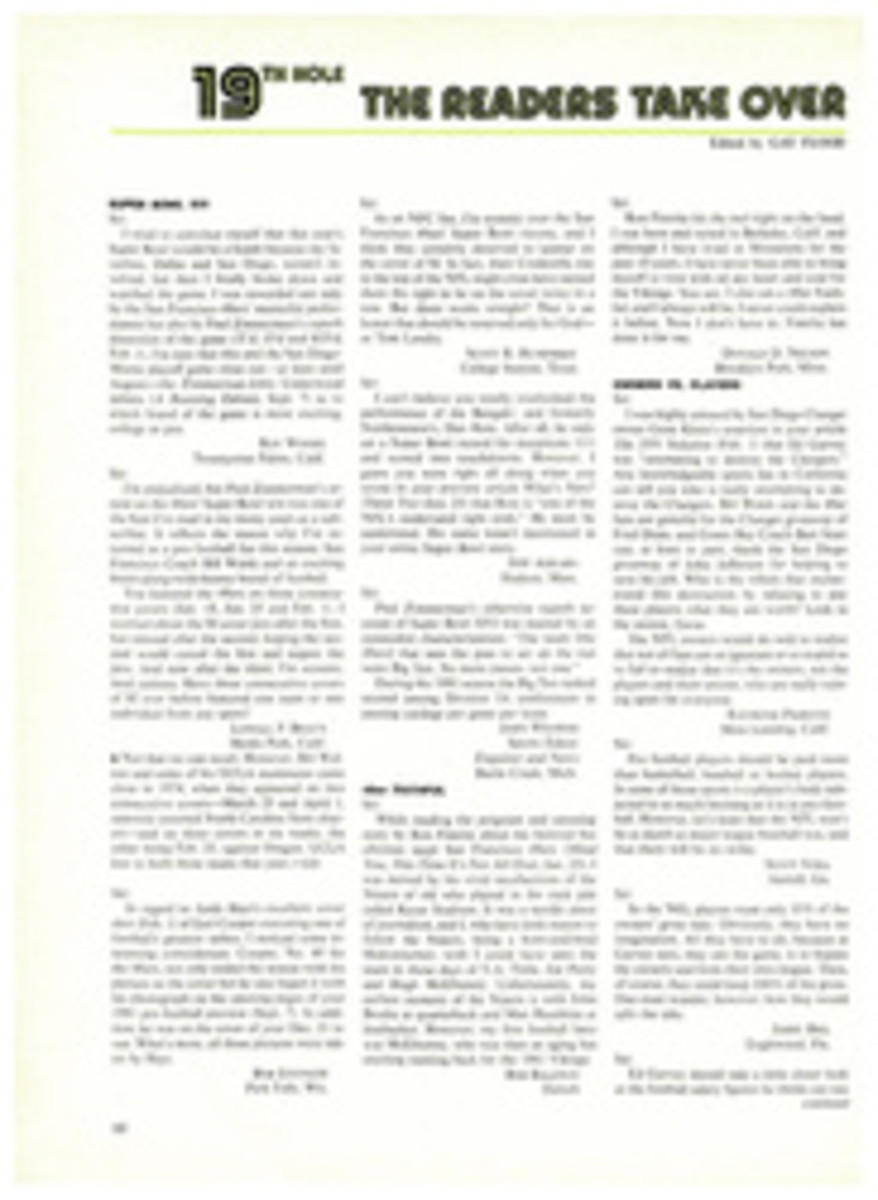
WHEN THIS FELLOW GETS FED UP WITH THE TUBE, HE TURNS TO SALMONVISION
Some nights Al Adams turns off the TV and watches salmon instead. Adams, a 52-year-old dentist, lives on the western shore of Mercer Island in Lake Washington, east of Seattle, and he just happens to have a salmon stream, which can be viewed through a section of glass flooring, running beneath his living room floor. The stream was his idea and creation. The adult salmon that return to it were hatched from eggs incubated in Adams' backyard greenhouse. He may have the world's first pink thumb.
Each year, beginning in late October, the salmon gather off the mouth of Adams' little stream. Then, one by one, they make their way up the seven-step fish ladder leading to a portion of the stream below the greenhouse where they were born. Their return is something the family—Al, his wife, Edee, and their four children—never tires of watching.
The Adamses had the house designed with twin foundations separated by a 10-foot-wide gap to accommodate a stream. Electric pumps draw water from Lake Washington and raise it to a series of small man-made ponds adjacent to the house. The ponds supply about 100 gallons a minute to the stream. When the Adamses moved into the house in 1970, all they had in mind was, Al says, "a pond, running water and maybe some trout."
But there were no fish until February 1974, when a friend offered Adams about 300 coho salmon fry left over from an experiment at the University of Washington. Adams put the salmon in his stream, where they stayed, feeding on commercial fish food, until they had grown to smolt (migratory) size. Then they left to begin a journey through the lake to its outlet and into Puget Sound and beyond.
Watching the little salmon grow to migratory size got Adams thinking about a long-term salmon-rearing project. Biologists from the State Fisheries Department checked out his backyard stream system and told him it was well suited for rearing coho. In cooperation with the marine biology class at nearby Mercer Island High, Adams got a state permit and went to work. He and several students from the class went to a state salmon hatchery and spawned four female and three male coho salmon.
The spawning yielded about 12,000 eggs, which were placed in a redwood trough built by Mike Erickson. one of the students. The trough was set up amid the plants in Adams' greenhouse, and water siphoned from the artificial stream flowed through the incubating eggs.
On Christmas 1975 Adams got a special present: the birth of the first fish. Within three days just about all the eggs that were going to hatch had done so—about 10,000 of the original 12,000.
When the tiny fish—known at that stage as alevins—were ready to begin feeding, Adams transferred them to the stream next to the greenhouse. Thanks to frequent feeding, by summer the salmon were ready to begin their long journey to the Pacific.
Once they reach salt water coho spend about 18 months feeding and growing until they reach sexual maturity, when unerring instinct calls them home to their river of origin. But birds, other fish, marine mammals and fishermen take a heavy toll along the way, leaving perhaps only a single survivor from every 100 smolts that went to sea.
If any of the 300 salmon released from Adams' stream in 1974 survived to adulthood, they would have returned in the fall of 1976. Not surprisingly, none did. But there were greater hopes for the 10,000 fish hatched in the greenhouse; the adults from that group were due home in the fall of 1978.
On Oct. 19, 1978 Adams found a bright four-pound adult coho in his stream. The fish was dead, although there were no visible signs of illness or injury. "That really tugged at me a lot," Adams says. "I hesitated to accept the fact that it was one of our fish." The cause of its death was never determined.
But within a few days other salmon began to make their way up his tiny stream, and Adams knew his fish were finally coming home. "Then I relaxed and started to enjoy the trip," he says. In all, 140 salmon returned that year.
Since 1976 Adams has hatched, reared and released a new crop of coho every year. In 1979, 65 adult fish returned from his 1977 release; in 1980 six fish came home from the 1978 group. Last fall's 24 returnees were from the 1979 crop; the fish released in 1980 are still at sea. The largest fish ever to return was a 10½-pound female, which yielded 4,200 eggs when Adams spawned it.
Adams' most anxious moments have been during power failures, when he is forced to organize family bucket brigades to keep water circulating through the hatchery. Without running water, eggs or newly hatched alevins could die from lack of oxygen. Last year a violent storm struck on Nov. 14 and the power at Adams' home was off more than 12 hours, the longest outage since he began hatching salmon. Al and Edee grew sore packing water buckets to the hatchery, but their egg crop survived.
Along with the original redwood hatchery, Adams now has fiber-glass trays that give his hatchery a capacity of 100,000 eggs. His state permit allows him to release only 30,000 fish, so the surplus is loaded aboard state hatchery trucks and released elsewhere. A pathologist examines the salmon before they are set free to make sure they are healthy.
Adams likes to fish for salmon but says he has "evolved a different frame of mind" about angling since he began raising his own. It's not so much that he's worried about catching one of his own fish—the chances of that are infinitesimally small—but "I'm getting more and more into the mind-set of catch-and-re-lease. I get a real pleasure out of catching a beautiful fish, looking at it and then letting it go." That's understandable, because Adams knows better than most people the odds and obstacles a salmon has to overcome.
ILLUSTRATION
JARED D. LEE

